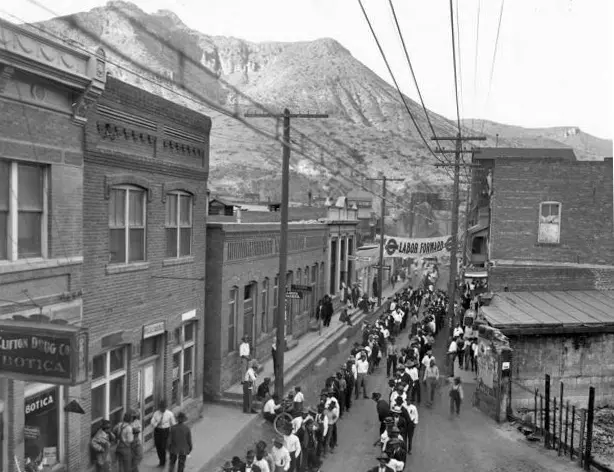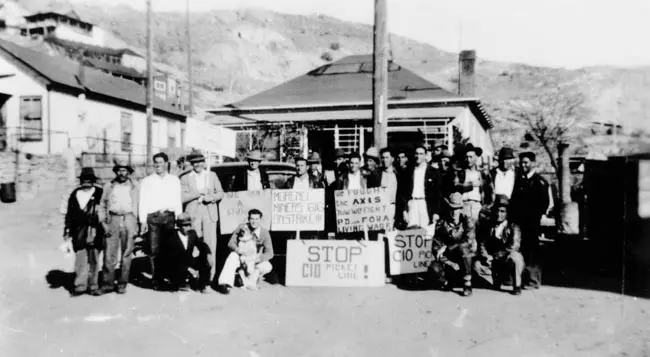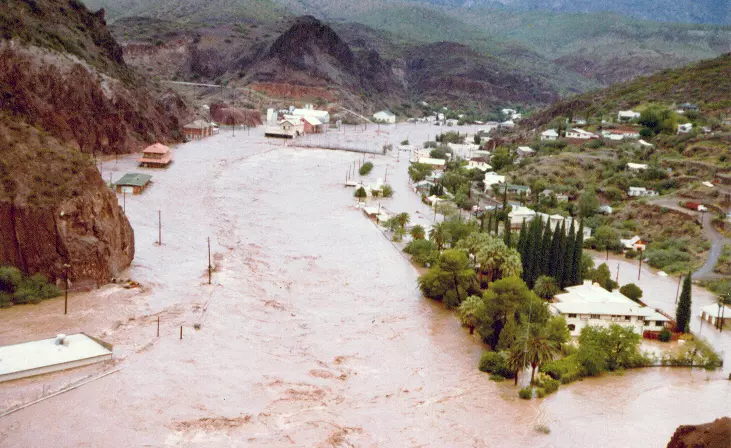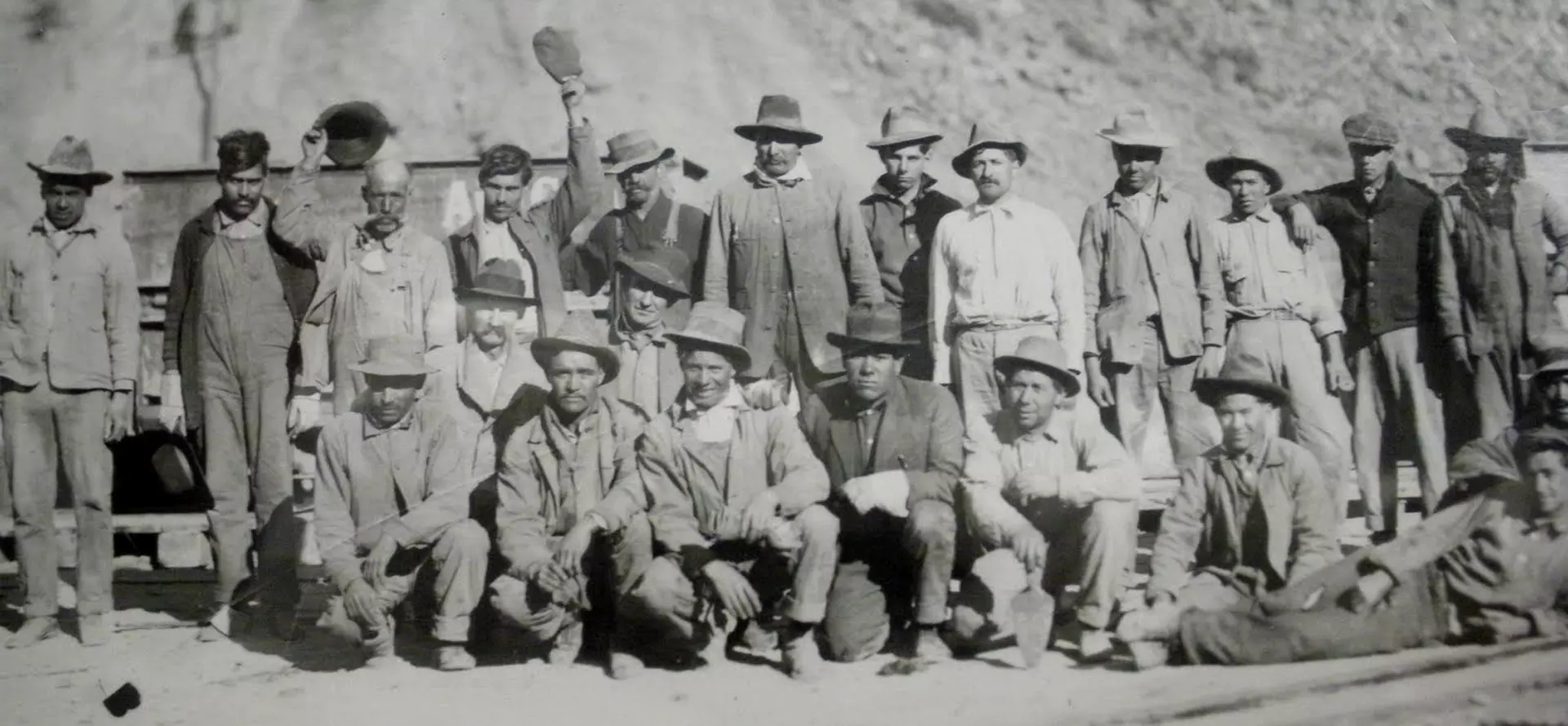Union organizing began in Clifton in 1903, when Mexican laborers banded together to form "mutualistas" or mutual aid societies. The first strike occurred in June, 1903.
In September 1915, with wartime demand for copper on the rise, more than 4000 workers at several western mining companies, including Phelps Dodge, struck for higher wages and union recognition. At the time, Anglo laborers earned approximately $2.80 a day and Mexicans earned $2.39 per day. Mexicans were typically barred from advancing into the higher paying "craft" jobs. The result was a significant increase in wages and recognition of a "standing grievance committee" (but not the union).
Congress passed the National Labor Relations Act in 1935, providing federal protection for the right to organize a union and strike.
In 1942, mine workers united to form Morenci Miners Local 616 of the International Union of Mine, Mill and Smelter Workers, representing more than 3000 mine workers. The new union won its first major victory following a 107-day strike in 1946.
Meanwhile, in Silver City, Mine-Mill local won a victory against Empire Zinc that was enshrined in the 1953 movie "Salt of the Earth."
The movie was banned from many theaters but drew huge crowds at the union halls where it was shown. At the Union Hall in Clifton, the film showed round-the-clock so that workers on all shifts could see it.Local 616 and a handful of other local unions united with the million-member United Steelworkers of America in 1967 to call for "pattern bargaining", which would enforce uniform wages and benefits for companies of similar size producing similar products. During a nationwide strike in 1967, more than 60,000 workers walked out at 73 locations. The strike would all but shut down US copper, lead, zinc and silver production for 8-1/2 months. From 1968 to 1983, pattern bargaining was the norm for every three-year contract.
In the early 1980s, a worldwide recession sent copper mining into a tailspin, with the lowest copper prices in 50 years. In April, 1982, Phelps Dodge temporarily laid off its entire Arizona and Texas work force.
As the three-year contract expiration deadline approached, major copper producers including Kennecott, Magma, Inspiration, ASARCO all signed on to the same basic "pattern contract," but Phelps Dodge held out.
The strike began at midnight on June 30, 1983. During past strikes, the company had simply shut down, but this time Phelps Dodge hired replacement workers, and clashes between strikers, strikebreakers and their families escalated. On August 17, 1983, Arizona Governor Bruce Babbitt sent more than 750 law enforcement personnel to Morenci, including 426 state troopers and 325 National Guardsmen to "keep the peace."
At the end of September, a few days after Phelps Dodge announced that all strikers had been permanently replaced, the San Francisco River burst its banks, destroying 300 homes and 86 of Clifton's 126 businesses.
With their homes and their jobs gone, families left Clifton in droves. The population dropped from 4250 to around to just over 3000.
In the waning days of the strike, the Women's Auxiliary gained increasing importance, documented in Barbara Kingsolver's book, "Holding the Line."
Phelps Dodge employees voted in October, 1984, to decertify the unions. Legal appeals would drag on for more than a year, with the strike officially ending on February 19, 1986.

Strike of 19131

Morenci Miners Union Local 616 on strike in 19462

Flood of 1983
2 Hector Galán, "Los Mineros Photographs," David Velasquez Collection
